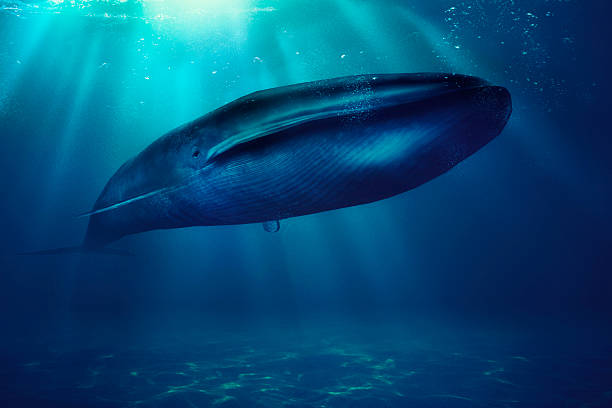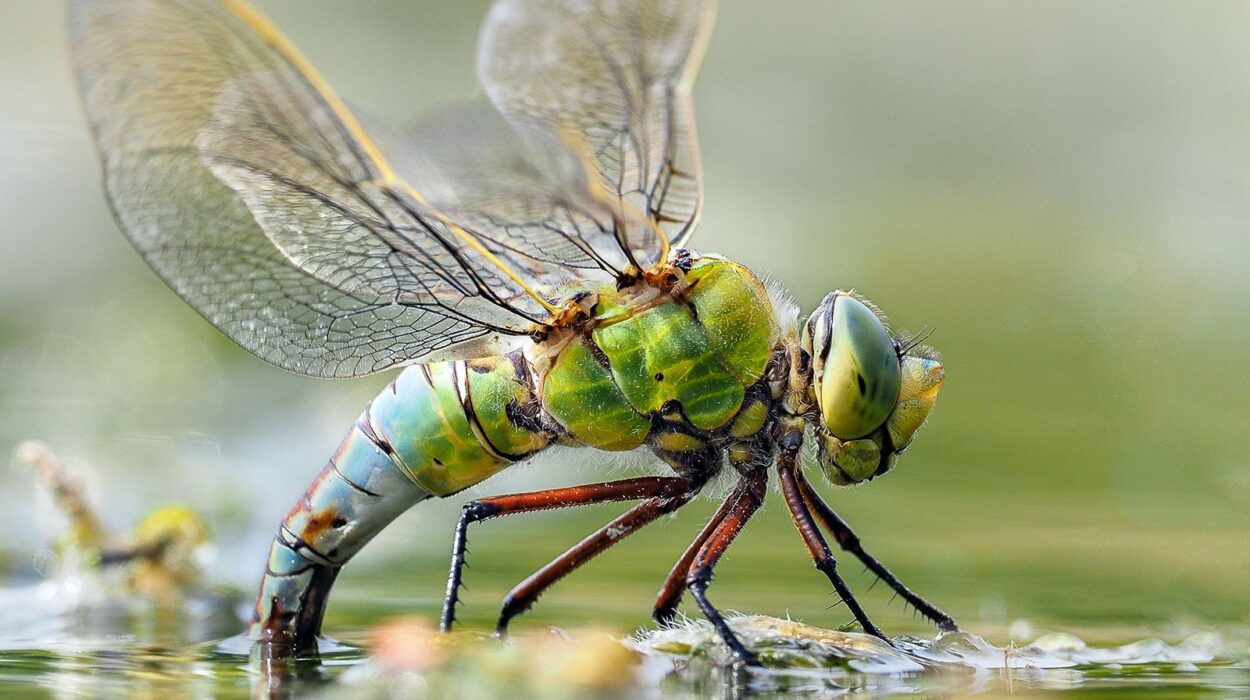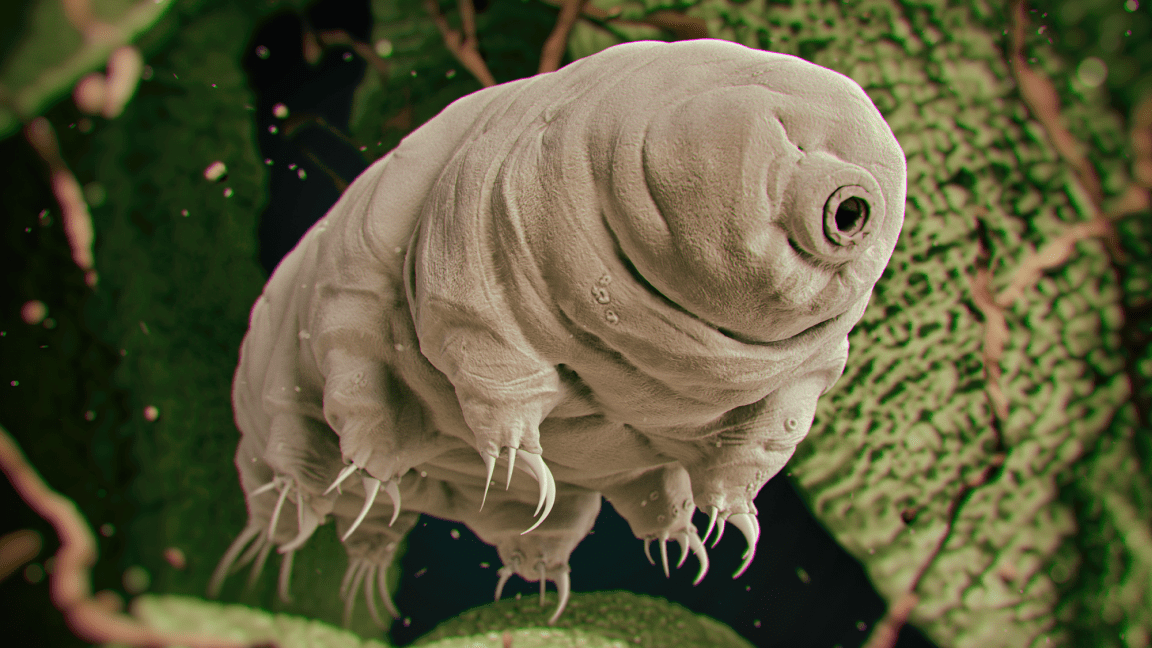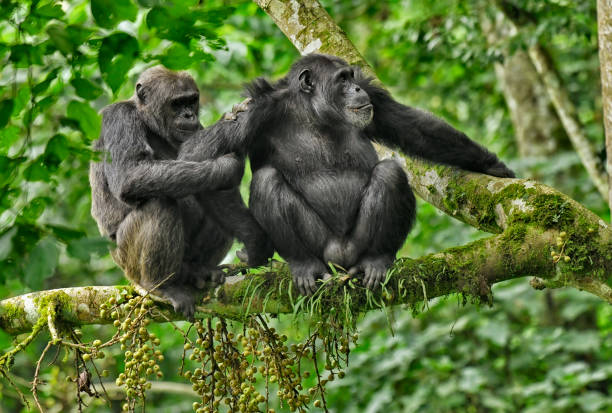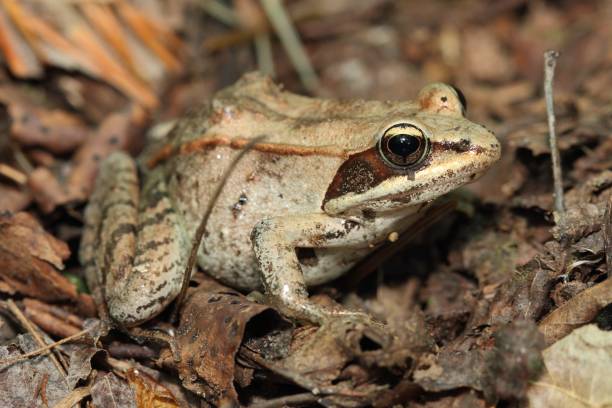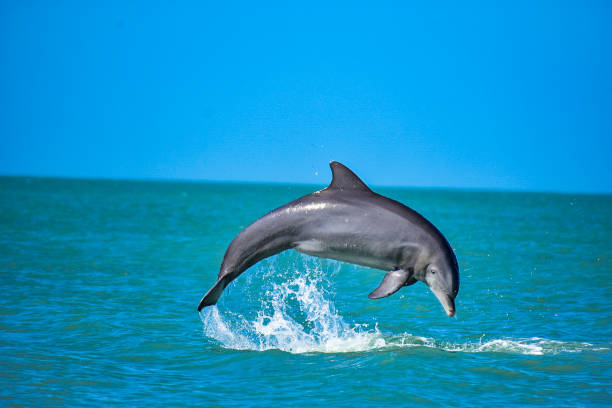The ocean is a realm beyond imagination — vast, mysterious, and older than time itself. Beneath its glittering surface lies a universe of life so immense and diverse that it challenges everything we know about existence. Some of these creatures grow to sizes that defy comprehension, stretching the limits of biology and the human imagination alike.
The sea has always been a mirror of wonder. It holds stories of leviathans that once haunted sailors’ dreams and beasts that still glide through the deep today, unseen by human eyes. The largest sea animals ever discovered are not just records in biology; they are living monuments to evolution’s artistry — colossal beings sculpted by pressure, time, and the rhythm of the tides.
Let us descend into this watery world and meet ten of the greatest giants that have ever ruled the ocean’s endless blue.
1. Blue Whale – The Giant Heart of the Ocean
No creature in Earth’s history rivals the Blue Whale (Balaenoptera musculus) in size. Stretching up to 100 feet (30 meters) long and weighing as much as 200 tons, this gentle giant is the largest animal to have ever lived — even larger than any dinosaur.
A single Blue Whale tongue can weigh as much as an elephant, and its heart is the size of a small car, beating with a slow, powerful rhythm that echoes through the depths. Each beat moves hundreds of liters of blood through a body built for majesty, not haste.
Despite its size, the Blue Whale’s diet is almost poetic in contrast — it feeds primarily on krill, tiny shrimp-like creatures. During feeding season, a Blue Whale may consume up to 4 tons of krill per day, filtering them through baleen plates that act like natural sieves.
The Blue Whale is also a singer. Its calls are among the loudest sounds produced by any animal on Earth, carrying for hundreds of miles beneath the waves. Scientists believe these songs may serve as navigation, communication, or even expressions of emotion.
Their existence is a humbling reminder: the greatest power in nature can exist alongside the deepest gentleness.
2. Fin Whale – The Sleek Titan
Sleek, swift, and second only to the Blue Whale in size, the Fin Whale (Balaenoptera physalus) has earned the title “the greyhound of the sea.” Reaching lengths of 85 feet (26 meters) and weighing up to 80 tons, Fin Whales combine enormous size with breathtaking speed, capable of gliding through the ocean at nearly 25 miles per hour.
Their bodies are built for elegance — long, streamlined, and beautifully patterned with asymmetrical coloration: the right side of their face is lighter than the left, a mystery that continues to fascinate marine biologists.
Fin Whales feed on krill, squid, and schooling fish, using a method known as lunge feeding — accelerating toward prey with their jaws open wide before engulfing massive volumes of water and filtering out food.
Once heavily hunted for oil and meat, their populations dwindled drastically during the 20th century. Today, conservation efforts offer hope, and seeing one breach the surface is witnessing grace on an unimaginable scale — a living sculpture of silver and muscle moving effortlessly through eternity.
3. Whale Shark – The Gentle Spotted Colossus
The Whale Shark (Rhincodon typus) is the largest fish in the world — a magnificent, slow-moving filter-feeder that can reach lengths of 60 feet (18 meters) and weigh more than 20 tons.
Despite its intimidating name and size, the Whale Shark is a peaceful wanderer. Its wide mouth opens like a gateway to the deep, yet it feeds only on plankton, tiny fish, and microscopic life suspended in the sea. As it swims with its colossal mouth agape, it filters thousands of gallons of seawater every hour.
Its skin, marked with a mesmerizing constellation of white spots and stripes, glows under the sunlight — a living mosaic that makes every Whale Shark uniquely identifiable. Scientists use these patterns like fingerprints to track individuals across the globe.
Found in warm, tropical oceans, Whale Sharks inspire awe and affection rather than fear. Divers who swim alongside them describe the experience as swimming beside an ancient god — immense yet serene, the very embodiment of peace in motion.
Their gentleness, despite their enormity, serves as a quiet lesson: true strength often requires no aggression at all.
4. Sperm Whale – The Deep-Diving Giant
If the Blue Whale is the heart of the ocean, the Sperm Whale (Physeter macrocephalus) is its philosopher — deep, contemplative, and mysterious. This massive toothed whale, capable of growing up to 68 feet (21 meters) and weighing 60 tons, is the largest predator on Earth.
Its most striking feature is its enormous square head, which can make up one-third of its body length. Inside lies the legendary spermaceti organ, a massive reservoir of waxy oil that helps regulate buoyancy and may aid in echolocation.
Sperm Whales dive to staggering depths — over 10,000 feet (3,000 meters) — in pursuit of their favorite prey: the elusive giant squid. Down in the pitch-black abyss, they use powerful clicks to navigate and hunt, creating sounds so intense they can stun prey instantly.
They hold their breath for over 90 minutes during these deep dives, experiencing pressures that would crush most life forms. Yet when they return to the surface to breathe, they exhale with a distinctive oblique spout, as if exhaling the mysteries of the deep itself.
The Sperm Whale’s story is one of endurance, intellect, and poetry. They have complex social structures, communicate with codas — sequences of clicks that may function like a language — and form lifelong family bonds.
It is no wonder Herman Melville immortalized them in Moby Dick — they are symbols of both the majesty and mystery of the sea.
5. Giant Squid – The Phantom of the Deep
Few creatures inspire as much myth and fascination as the Giant Squid (Architeuthis dux). For centuries, it was the stuff of legend — the Kraken of sailor tales, said to drag ships into the abyss. Today, we know that truth was not far from fiction.
Giant Squids can reach lengths of 43 feet (13 meters), with eyes as large as dinner plates — the biggest in the animal kingdom. These enormous eyes are perfectly adapted to detect the faintest glimmers of light in the deep sea, where sunlight never reaches.
They are powerful swimmers, propelled by jet-like bursts of water and guided by eight arms and two long tentacles lined with serrated suckers. With these, they seize their prey — mostly deep-sea fish and smaller squid — and pull it toward a razor-sharp beak capable of tearing through flesh and bone.
Encounters between Giant Squids and Sperm Whales are among nature’s most epic battles. Scars found on the faces of whales bear silent testimony to these titanic clashes.
Only in recent decades have humans captured footage of living Giant Squids in their natural habitat. To see one is to glimpse a creature that seems born of myth, yet perfectly real — a ghostly monarch of the deep’s eternal darkness.
6. Colossal Squid – The Hidden Leviathan
If the Giant Squid is a legend, then the Colossal Squid (Mesonychoteuthis hamiltoni) is its darker, even more mysterious sibling. Found in the frigid waters of Antarctica, this creature outmasses its giant cousin, growing up to 46 feet (14 meters) long and weighing over 1,000 pounds (450 kilograms).
Its arms are thicker, its body more muscular, and its tentacles armed with rotating hooks — nature’s answer to the abyss. The Colossal Squid’s eyes are the largest of any known animal, measuring up to 16 inches (40 centimeters) across — roughly the size of a soccer ball.
Very few have ever been seen, and fewer still have been captured intact. The largest known specimen, recovered from Antarctic waters in 2007, remains preserved as a scientific treasure.
Because of its habitat, little is known about its behavior. But one thing is certain: the Colossal Squid is one of the ocean’s most formidable predators. Its bulk, strength, and adaptations to the freezing dark make it a living relic of evolutionary brilliance.
It is a creature that embodies the ocean’s greatest secret — that even in the coldest, darkest corners of the Earth, life thrives in forms both terrifying and magnificent.
7. Lion’s Mane Jellyfish – The Floating Galaxy
Drifting through cold northern seas like an alien sun, the Lion’s Mane Jellyfish (Cyanea capillata) is both ethereal and enormous. Its bell can reach 7 feet (2.1 meters) across, but its tentacles — fragile, trailing filaments — can stretch over 120 feet (36 meters) long, making it one of the longest known animals in the world.
These delicate threads pulse with stinging cells that paralyze prey — tiny fish and plankton that wander too close. Yet, despite their lethality, Lion’s Mane Jellyfish are mesmerizing to watch, glowing with soft bioluminescent light as they drift through icy waters like living constellations.
They are ancient, existing long before dinosaurs walked the Earth. Their pulsating movements are not just a means of locomotion but a heartbeat — a slow, rhythmic pulse that mirrors the tides themselves.
Even in death, they serve the ocean’s balance, becoming food for sea turtles and other marine creatures. In their fragile magnificence, they remind us that size in nature can coexist with grace and fragility.
8. Orca – The Apex Predator of the Seas
Powerful, intelligent, and beautifully social, the Orca (Orcinus orca) — often called the Killer Whale — is the ocean’s ultimate strategist. At up to 32 feet (9.8 meters) long and weighing over 6 tons, it’s one of the largest predators on Earth.
But it’s not size alone that makes the Orca remarkable — it’s their mind. Orcas live in complex family groups called pods, with unique dialects, hunting techniques, and even cultures passed down through generations.
Their diets vary by region: some specialize in fish, others hunt seals, penguins, or even large whales. They coordinate attacks with precision, using vocalizations and synchronized movements that resemble military tactics.
Despite their fierce reputation, Orcas have never been known to kill humans in the wild. Instead, they display curiosity, empathy, and playfulness, often approaching boats to ride the waves or make eye contact with divers.
In their sleek black-and-white beauty lies a story of intelligence and kinship — proof that the ocean’s mightiest hunter can also be its most compassionate.
9. Great White Shark – The Silent Power
The Great White Shark (Carcharodon carcharias) is the embodiment of nature’s raw efficiency. Reaching lengths of 20 feet (6 meters) and weighing up to 5,000 pounds (2,250 kilograms), it reigns as the most formidable predatory fish in the ocean.
Great Whites are built for power and precision. Their torpedo-shaped bodies allow bursts of speed over 25 miles per hour, and their mouths — lined with hundreds of serrated teeth — are designed for devastating bites.
Yet, contrary to Hollywood’s portrayal, Great Whites are not mindless killers. They are cautious, intelligent hunters who rely on acute senses to detect electrical signals from prey miles away.
They are solitary but curious, often approaching divers with a mix of boldness and restraint. Their eyes, dark and deep, reflect not malice but awareness — a primal wisdom honed by millions of years of evolution.
In every sleek motion and every measured strike, the Great White embodies the ocean’s unyielding balance — strength with purpose, fear balanced by fascination.
10. Megalodon – The Extinct Emperor of the Seas
Long before humans dreamed of ships or stories, a true leviathan ruled the oceans: the Megalodon (Otodus megalodon). This prehistoric shark, extinct for about 3.6 million years, remains one of the largest and most awe-inspiring predators ever to exist.
Estimates suggest that Megalodon reached lengths of 60 feet (18 meters) and weighed more than 100 tons. Its teeth — some over 7 inches (18 centimeters) long — were capable of crushing the bones of whales.
Fossil evidence reveals that Megalodon’s bite force could exceed 40,000 pounds per square inch, making it the most powerful bite in Earth’s history. Its range was global, dominating warm seas and preying on marine mammals, giant turtles, and other sharks.
Though it vanished millions of years ago, Megalodon’s legend endures. Its teeth, scattered across ocean beds, are silent relics of an age when the seas belonged to monsters.
To imagine it alive is to confront the true magnitude of evolution — a reminder that even giants fall, and that nature’s grandeur is both fleeting and eternal.
The Ocean’s Infinite Canvas
The giants of the sea — living and extinct — are not just measurements of size, but testaments to adaptation and endurance. They are living echoes of Earth’s vast creative power. From the gentle whale that sings to the depths, to the jellyfish that glows like a drifting star, every one of them tells a story of life shaped by time and tide.
The ocean has no equal in its ability to inspire awe. It hides both monsters and miracles, yet binds them all in harmony. The largest sea animals ever discovered are not just biological marvels; they are reminders of the planet’s enduring mystery — that beneath the waves lies a world we have barely begun to understand.
And as we gaze across that shimmering horizon, we know that for every giant we’ve discovered, countless more remain unseen — waiting, perhaps, to remind us that Earth’s greatest wonders are often those we have yet to meet.
